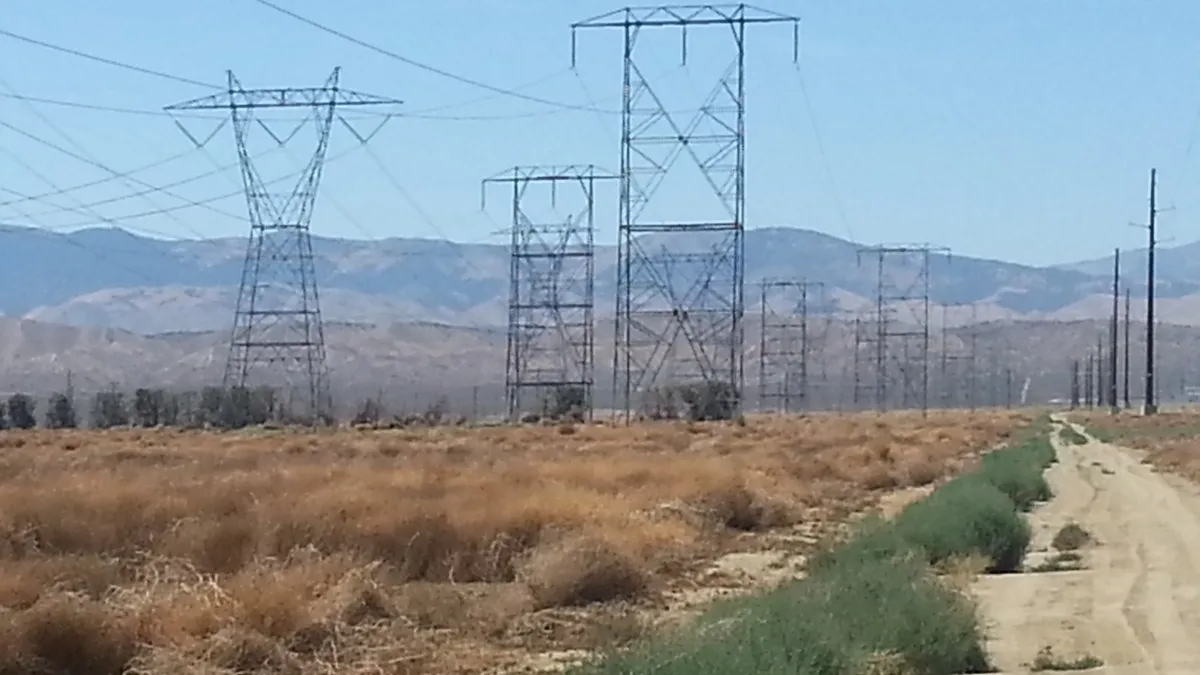Dive Brief:
-
With customer demand already driving the rapid growth of renewable energy, a climate-focused infrastructure bill should focus on transmission and research, according to experts on a Thursday panel hosted by the American Council on Renewable Energy.
-
Infrastructure is next on the Biden administration agenda, and there's ample political will to increase spending on infrastructure, according to Christina Hayes, vice president of federal regulatory affairs at Berkshire Hathaway Energy. Focusing on decarbonization by 2035, she said, could create thousands of new jobs and other benefits, but requires a focus on "shovel ready" projects.
-
Private capital for clean energy and transmission projects is readily available, according to Susan Nickey, executive vice president and chief client officer of climate-focused investment firm Hannon Armstrong. However, she said, cumbersome permitting processes have prevented the construction of needed transmission projects.
Dive Insight:
Amid calls for funding for renewable energy projects, what the U.S. may really need, Nickey said, is a streamlined siting and permitting process.
Private investment, and even the purchase of PPAs by corporations, is driving faster and smarter growth of renewable energy generation, Scott Hennessey, vice president of federal policy for Brookfield Renewables, said during the panel discussion. Investors are directing record amounts of capital to clean, net-zero developments, Nickey said. So the real question, she said, is not how to fund, but how to craft policies that support, the continued transformation of the U.S. energy system.
"There's a ton of focus on generation in the energy space," said Bill Murray, senior vice president of corporate affairs and communications for Dominion Energy. "We shouldn't neglect the grid itself. ... The part of the business that is closest to the customer is distribution."
Investors, commercial customers and increasingly public sentiment all demand renewable energy generation, Murray said, but for utilities to meet those demands will require an expansion of the transmission system.
"A lot of solar, most wind, and certainly offshore wind, is not practical or useful without the attendant transmission," he said.
A tax credit for transmission, Hayes said, could help to build the "big backbone transmission we've been talking about" that would move energy across the nation from areas rich in renewable energy resources, to centers of energy demand. But when it comes to calls to create a new federal agency dedicated to renewable energy or transmission planning, she said, "we already have an app for that."
What is needed, she said, is to get the siting and permitting processes to work together, across state lines and federal agencies, and according to a reliable time frame.
Hennessey and other panelists also spoke of the need to level the playing field for existing renewable energy tax credits, noting that there is a significant need to maintain dams and reservoirs that generate hydropower. Speakers also identified geothermal and even green hydrogen as resources that could also benefit from the creation of more resource-agnostic credits and policies.
"We need to maintain non-emitting resources even as we are growing generation," Hennessey said.














